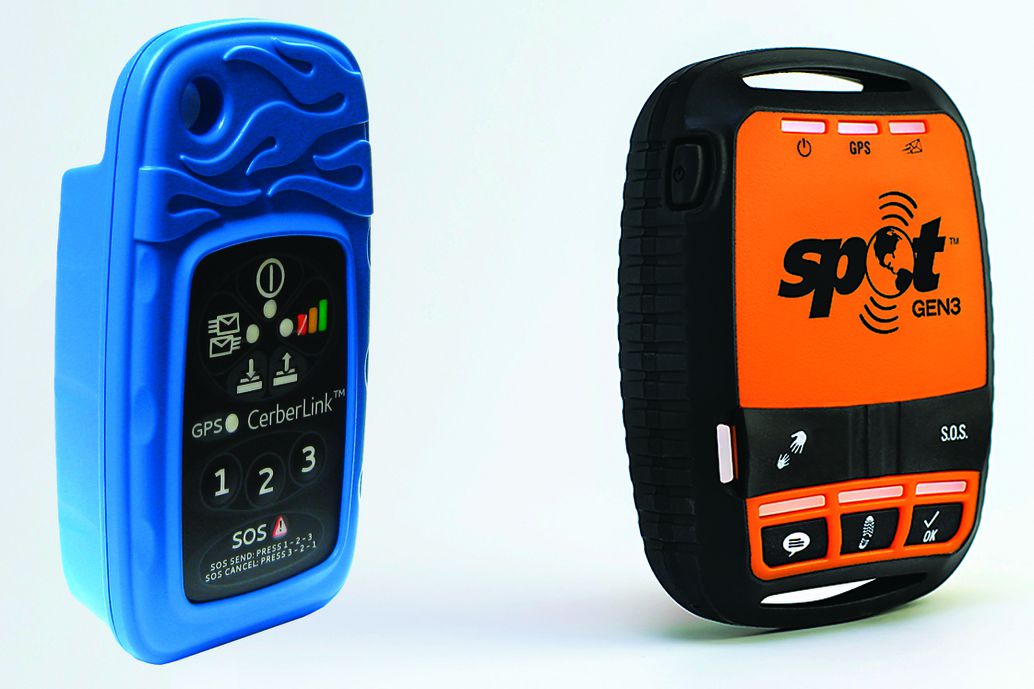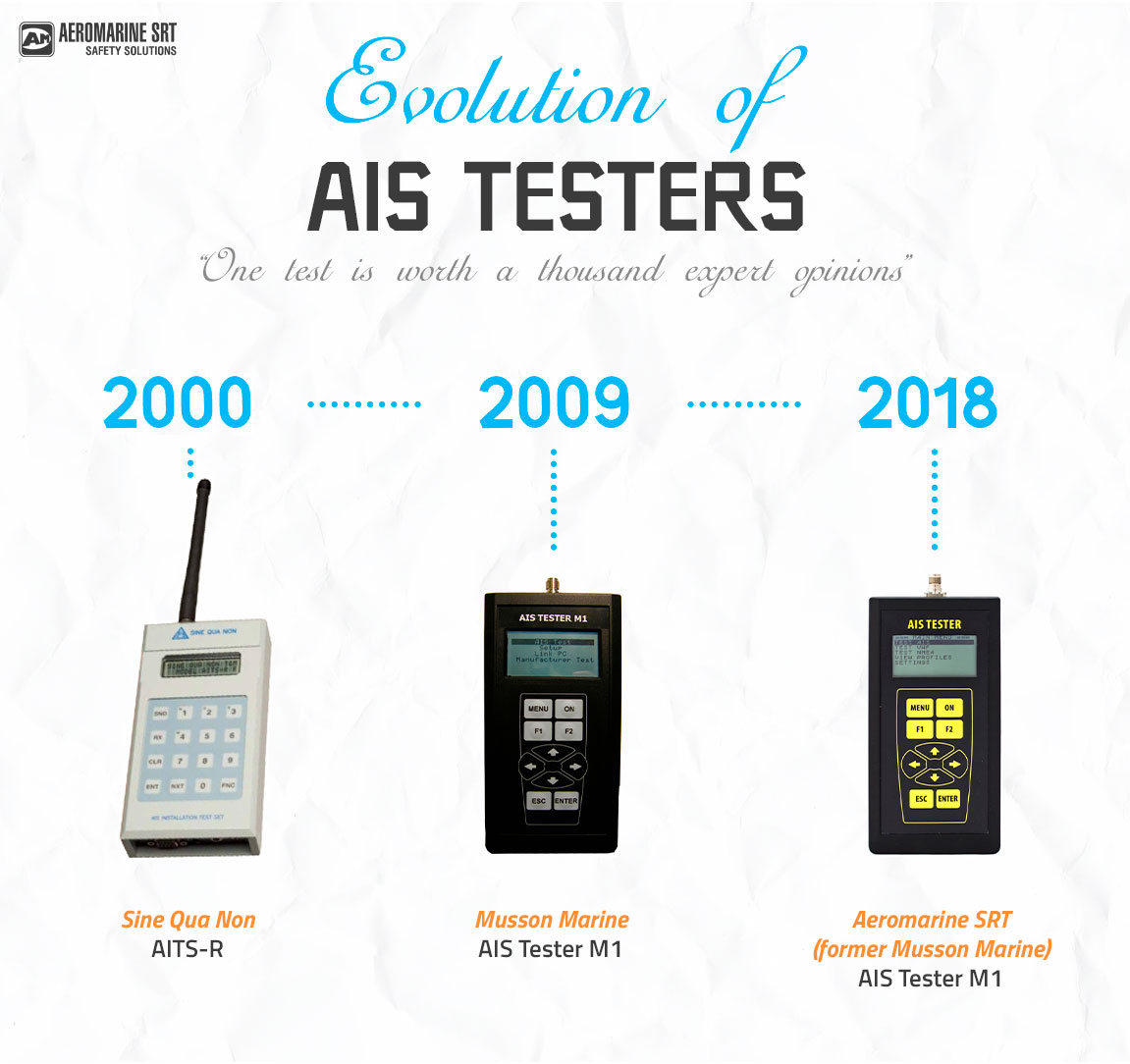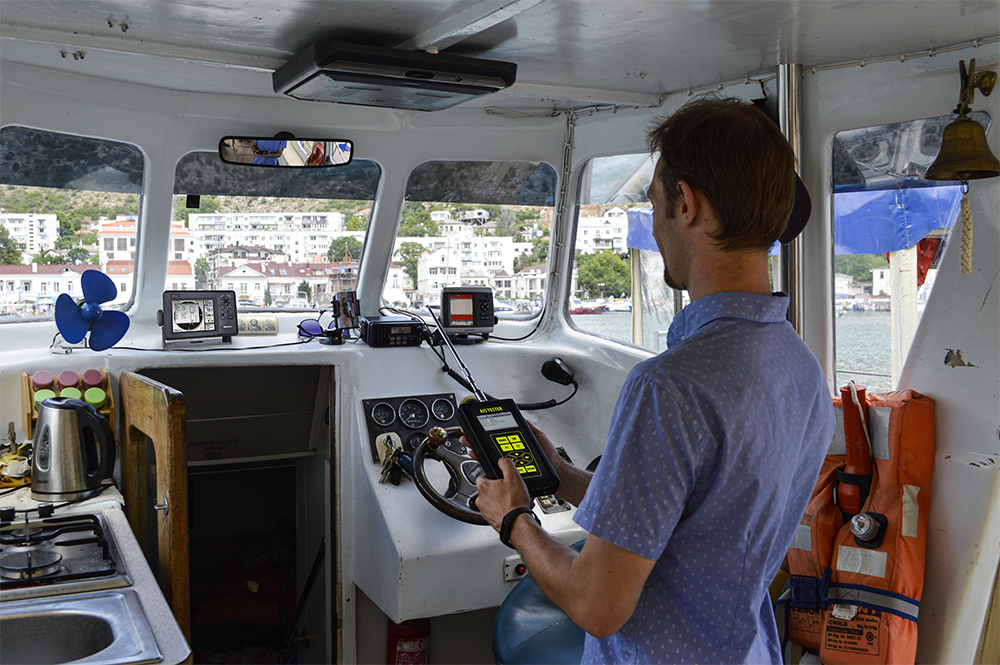Maritime Survival Locating Systems (“Man overboard devices”)
These ‘MSLS’ or ‘MOB’ devices and systems are intended for very short-range crew retrieval applications. The MSLS is designed to allow for self help from the vessel or organisation where there is a risk of crew falling overboard by sounding an alert from the onboard receiver.
They are not part of the GMDSS, but may use frequencies which can be detected by both GMDSS vessels and non-GMDSS vessels.
VHF DSC-based ‘MOB’ devices
One example is a device transmitting on VHF Ch.70 using DSC, having an integral GNSS receiver, and transmits periodically, an automated Distress-priority alert and DSC message with the associated text ‘MAN OVERBOARD’. The DSC message contains the GNSS position and time, which will be displayed on the vessel’s VHF DSC receiver.

A receiver on the parent vessel continuously monitors the system’s designated frequency. If an incident occurs the transmitter involved is activated and the received signal initiates an alarm and may in some cases also be used for homing purposes to guide rescuers back to the casualty.
Until July 2012, these devices used a numerical identifier of the format 5038XXXXX, where x could be any number between 0 and 9.
Since July 2012, these devices use an international format 972xxyyyy for both DSC and AIS-based man overboard units, where x and y can be any number between 0 and 9, as specified in Recommendation ITU-R M.585. In this format, the ‘xx’ is a 2-digit code assigned to manufacturer(s) and ‘yyyy’ is a serial number assigned by the manufacturer. Once ‘yyyy’ reaches ‘9999’, the manufacturer restarts the numbering sequence from ‘0000’ again. There is no registration database kept for these devices nationally or internationally.
The units may also be fitted with an alerting light flashing at not-less than 20 flashes/min. If fitted, the light shall be capable of operating at least 6 h, which is also the main battery operation requirement. It may also be capable of being water activated.
The transmitter duty cycle
- When activated, no transmission is to occur for the first 20 s, but can occur between 20 s and 30 s.
- Then an initial DSC alert the message MAN OVERBOARD is transmitted (symbol 110) and type of subsequent communication ‘No information’ (symbol 126) which indicates that no subsequent communications will follow.
- As soon as a GPS position is available (to be less than 10 minutes), this position is transmitted.
- (if no position is obtained, the position field shall be filled with the digit 9 and the time field with the digit 8)
- After the first transmission with a position is sent, the message will be repeated at the rate of at least one report every 5 min for a period of 30 min. After 30 min has elapsed, the duty cycle shall change to 10 minutes, and will continue until the battery is exhausted of the MSLS is switched off.
- MSLS transmitter using DSC on VHF Ch.70, the transmitter duty cycles shall be randomly selected times of between 4.9 and 5.1 min and 9.9 and 10.1 minutes respectively.
The above mode is known as ‘Open-loop’, in that the DSC alert is broadcast to all ships in VHF range. However, in some countries these devices may operate in ‘Closed-loop’ mode, meaning that the MSLS broadcasts to the parent vessel only for the rst 5 or 10 minutes, then goes to ‘Open-loop’ mode to all stations. MSLS of this type may also be programmed as members of a group, by using the group MMSI format speci ed in Recommendation ITU-R M.585. This allows a group of ships to monitor MSLS by programming the group ID into their VHF DSC transceivers.
Current IMO DSC procedures require that ships are NOT to relay a VHF DSC distress alert. Ships are also not to acknowledge a VHF DSC distress alert via DSC, except in special circumstances, as detailed in COMSAR/Circ. 25, and a relevant extract from the COMSAR/Circ. 25 is shown below:
Note 1 – Appropriate or relevant RCC and/or Coast Station shall be informed accordingly. If further DSC alerts are received from the same source and the ship in distress is beyond doubt in the vicinity, a DSC acknowledgement may, after consultation with an RCC or Coast Station, be sent to terminate the call.
Note 2 – In no case is a ship permitted to transmit a DSC distress relay call on receipt of a DSC distress alert on either VHF channel 70 or MF channel 2 187.5 kHz.
Ship stations in receipt of a distress alert or a distress call shall, as soon as possible, inform the master or person responsible for the ship of the contents of the distress alert. As with all distress alerts, the master of a vessel or person responsible for the vessel is to decide whether it is able to render assistance.
VHF AIS-based ‘MOB’ devices
A number of devices used as Man Overboard Devices (Maritime Survivor Locating Systems/Devices) use AIS technology based on the burst transmissions defined in Annex 9 of Recommendation ITU-R M.1371. Early versions of these devices have the maritime identity of the format 970xxyyyy, but newer units starting from 2011, use the format 972xxyyyy, (see footnote 1 below the Table), which has been internationally agreed in Recommendation ITU-R M.585-6, Annex 2, Section 2.
The devices should be certified by a competent testing house that they are sufficiently compliant with the IEC 61097-14 for the purpose it is intended, or fully compliant with overseas standards, such as RTCM 11901.1 (June 2012). Additional overseas standards for these devices are under development.
Diver locating devices
Some diver locating devices use technology based on burst transmissions defined in Annex 9 of Recommendation ITU-R M.1371, in a similar way to Man Overboard devices. The International Maritime Organization (NAV 58) has agreed that diver locating devices used for routine diver operations should not operate on the international AIS frequencies 161.975 MHz (AIS 1) or 162.025 MHz (AIS 2).
AIS 1 and AIS 2 should only be used when a diver is in a non-routine situation. The associated text transmitted in a non-routine diver situation should be MOB ACTIVE (or MOB TEST in test mode). The maritime identifier in this situation should be the same as for MOB devices: e.g. 972xxyyyy, as described above.




Be the first to comment